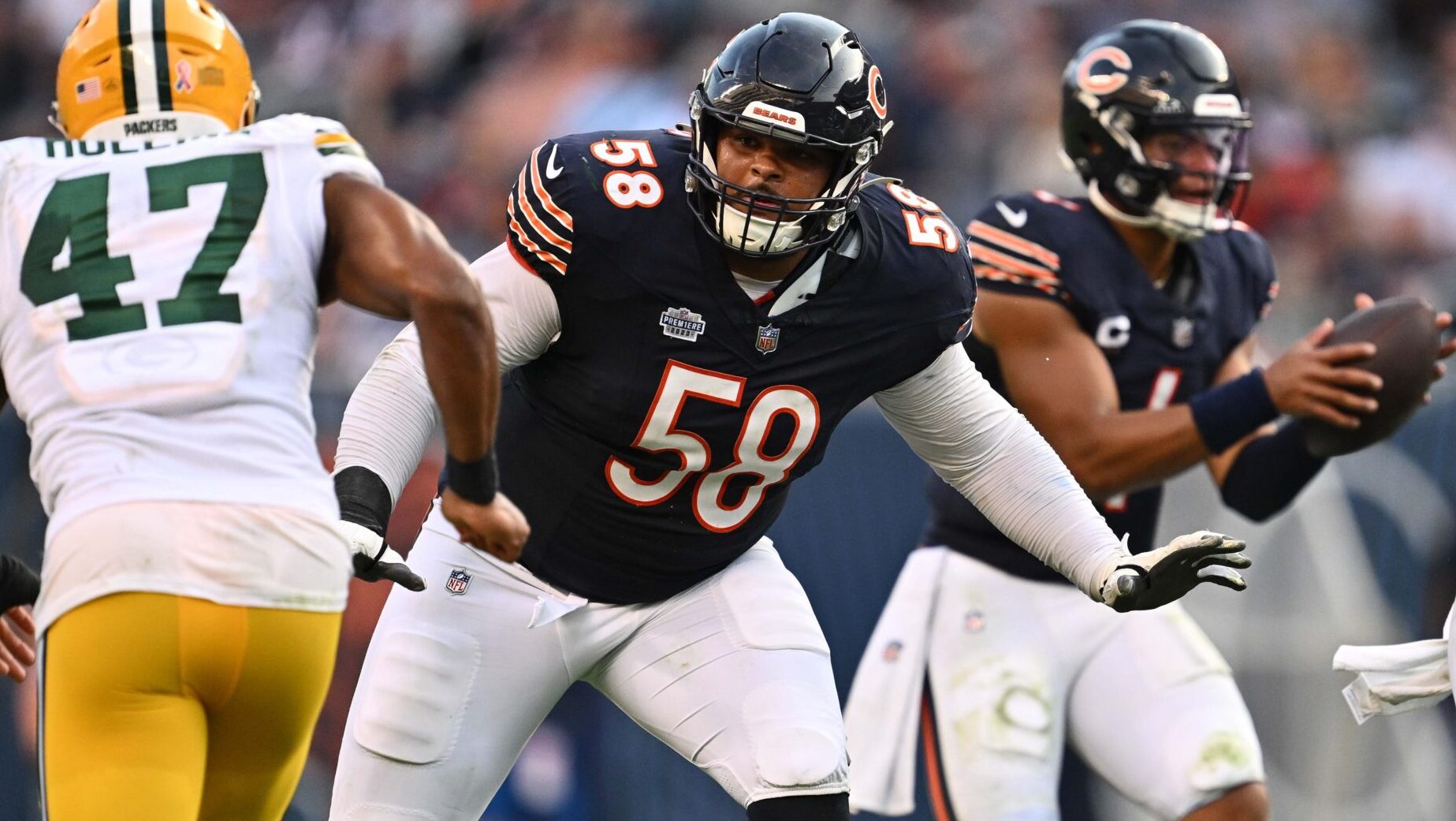Breakdowns
1/11/22
10 min read
Beyond X’s and O’s: Future Head Coaches Need These Intangibles

As President of the Detroit Lions from 2006-2015, I had the opportunity to lead two head coaching searches with General Manager Martin Mayhew that resulted in the hirings of Jim Schwartz and Jim Caldwell. The first search process I was a part of in 1997 brought Bobby Ross to Detroit. I also participated in two hirings led by Matt Millen: Steve Mariucci and Rod Marinelli. All were opportunities to experience the inherent challenges five teams around the NFL are facing today as they look for The Guy (or someday soon, The Gal) to lead their franchise.
Bill Polian wrote a great piece for the 33rd Team last week highlighting two common characteristics of both his successful head coach hires and those he reviewed in his excellent book Super Bowl Blueprints: leadership and teaching. While he covered both expertly, I want to take a deeper look at leadership, which from my experience of 20 years in the NFL is too often measured in coaching searches by what job(s) a person had and in what organizations.
Before a franchise searches for a new head coach, however, it better search for everything that contributed to the failures of the coach it just fired. While it is obvious that no coach loses by himself, too many organizations launch their search with that effective assumption.
Great organizations understand exactly what role the head coach plays and how the hundreds of other people in the organization can help him succeed or fail. The most important example of this is the dynamic and structure of the coaching staff and the personnel department, but it extends to the entire franchise. While, as Bill stated in his article, the head coach is the “be all and end all,” especially for the players, few individuals can live up to the expectations of an increasingly complex job in an increasingly diverse and multifaceted industry in an even more dynamic and unsettling world. Expecting someone to be a The Be All and End All Guy while supporting him like his failed predecessor is futile. The historical road of the NFL is littered with good head coaches done in by bad organizations.
There are also a few “don’ts” that need to be addressed before a good search process can begin. First, don’t look for a unicorn; they don’t exist. Even the best thoroughbred coaches need a quarterback to supply the horn and wings in order to fly over the rainbow. Also, don’t try to copy a past Super Bowl champion’s house key by hiring one of its coordinators and assuming he will unlock your place. On his own, he can’t. It’s not that intelligence, scheme proficiency and vision are irrelevant. They matter a great deal, but should be considered table stakes to be on the candidate list. And just as importantly, different situations call for different types of leadership. For example, a young team may need a more authoritative leader, while a veteran team may need more discernment and a lighter touch.
Armed with a comprehensive understanding of the organization’s strengths and weaknesses and some traps to avoid, the team’s decision makers can go about finding the next leader. Often this starts with a list of candidates, most of whom are coordinators of recently successful teams or former head coaches. It concludes with a triumphant press conference enthusiastically introducing the successful candidate and is all-too-often followed, on average 3 ½ years later, with an announcement that the process is starting again.
Often, the narrative around this wildly inefficient and ineffective process is that hiring a great leader is more art than science and that finding The Guy essentially boils down to a crapshoot. Fortunately, there is a great deal of actionable intelligence on hiring great leaders and separating the wheat from the chaff. Not surprisingly, much of the research exists in the study of successful CEOs, a role teams often compare to their head coach position.
Emotional intelligence is the indispensable condition of leadership. As author Daniel Goleman stated in his seminal 1995 bestseller, Emotional Intelligence, “Without it, a person can have the best training in the world, an incisive, analytical mind, and an endless supply of smart ideas, but he still won’t make a great leader.”
Emotional intelligence is a term that has been around since the 1960s, but became popular following the release of Goleman’s book. EI (also sometimes called EQ) is often defined as the ability to perceive, use, understand, manage, and handle emotions. Goleman breaks EI into five different components: self-awareness, self-regulation, motivation, empathy, and social skill. Each of these characteristics can be immensely important in determining if the smartest X’s and O’s coaches can become The Guy.
The first condition of EI, self-awareness, is marked by a deep understanding of one’s strengths and weaknesses, emotions and needs and how those things impact others. Self-aware leaders have an honesty with themselves and with others, resulting in confidence in their capabilities and an acute awareness of when and who to ask for help when necessary. These leaders rarely extend themselves into situations they are ill-equipped to handle.
When building a coaching staff, self-awareness is key. It allows good head coaches to “hire into the void,” assembling a staff that includes skills that they don’t possess, voices that will appropriately question and challenge assumptions, energy that will drive innovation and honesty that will transcend self-interest or fear. For example, a self-aware first-time head coach would have the confidence to hire a former head coach with whom he has never worked to be the coordinator on the other side of the ball instead of the more comfortable hire of a friend.
The second characteristic of EI is self-regulation. Every human is prone to biological impulses that can drive imprudent action and lead to a loss of control. Great leaders recognize those emotions and find ways to successfully deal with them, sometimes making them useful.
An even keel is as important in the NFL as it is in any industry, if not more so. Coaches who run hot-and-cold over the course of a game or a season are not going to last long or inspire much confidence while they are there. Jim Caldwell is a great example of someone who worked diligently on his reputation for stoicism on the sidelines. He is aware that in times of adversity during a game (which can come at different times for different players), a head coach who has a firm hand on the tiller of the ship can create calm confidence and resilience both for individual players and the collective team.
Motivation is the third EI characteristic and a trait that every great leader must have. Not only are they driven to achieve, achievement is what drives them. In other words, it is not the head coaching money providing the motivation, nor is it adulation, fame or status. Motivated leaders set high standards for themselves and others and love to measure and track progress.
While not in the NFL, Jim Harbaugh’s overhaul of his program at Michigan this past season can serve as an example. Jim took a sizable pay cut, tied additional compensation to performance and changed six of his ten assistant coaches, including his defensive coordinator and offensive line coach, lowering the average age of his assistants into the 30s. He also transformed his recruiting operations and made significant changes to the football operations and, generally, the way the program ran. When asked about the motivation to make the dramatic changes, Jim’s answers always referred to what was best for his players, his university, or the game of football. He also transferred that intrinsic self-motivation to his players. The results? A Big Ten championship and College Football Playoff appearance. When asked about the key to the success, Jim said his players and coaches, “gave their best — their very best — every day. Nobody ever thinks it’s that simple, but … it’s that simple.”
The last two components of emotional intelligence deal with a leader’s relationship to others: empathy and social skill. The first seems out of place in the tough, physical world of NFL gladiators. No one is passing out trophies for being sensitive or understanding someone’s feelings. Empathy, like humility, gets a bad rap. It is not mushy Kumbaya-singing pursuit of pleasing everyone. Empathetically intelligent coaches are often the best teachers, able to connect with their subjects to create authentic relationships that greatly enhance the ability to motivate, push and develop.
Players like to play for a head coach who has the skill to make them better. They love to play for a skilled coach who deeply cares to make them the best version of themselves for the team.
Empathy is also an underrated driver of great communication, one of the most important characteristics of a successful head coach in the NFL. When people feel heard and respected by a leader, they form a bond that gives the leader’s words greater impact. By the same token, a coach who cares about the feelings that motivate individuals in the organization is unlikely to keep people in the dark, which unwittingly creates isolation, fear of the unknown, rumors and distrust.
Social skills in some ways derive from the other dimensions of emotional intelligence. When leaders are aware and in control of their own emotions and actions and genuinely care about those under their leadership, they tend to build strong relationships and broad networks. In contrast, the social skills of someone lacking emotional intelligence look a lot like political schmoozing or self-promotion. EI’s social skills look more like friendliness with a purpose—the success of the collective.
Strong social skills also correlate with excellent communication. Much like with empathy, leaders with social acuity care about informing others and keeping them on the team. The networks built with social skills can form the basis for the staff a coach builds. They can also be important in a dynamically-changing environment, when finding common ground or a new course demands new inputs.
Over the coming days and weeks, owners, GMs and team executives will ponder many questions in looking for new leaders of their franchises. Those who stop at the typical ones (Who’s coaching tree? QB guru or defensive wizard? First-time or former head coach? Players’ coach or disciplinarian?) are resigned to getting the typical results that lead to the undistinguished 3 ½ year tenure of an average NFL coach in the modern era.
Those who start with tough questions and answers for their existing organizational structure and how it will support their new leader improve their chances for success. The best will use an intelligent process to look beyond the X’s and O’s and find the self-aware, self-regulated, motivated, empathetic leader to help take them to championships.








